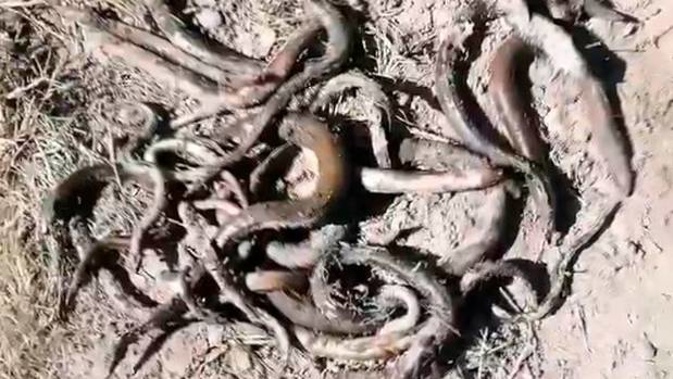
The Hawke's Bay Regional Council has been forced to halt drainage work near Puketapu after the death of dozens of native eels.
A video circulating on social media showing a pile of dead eels on a grassy bank sparked outrage online on Monday.
It was not immediately clear whether they were shortfin eels, or the more endangered longfin eels.
One Facebook user said the drainage work was essentially "annihilation of eels and their habitat". Another said it was "disrespectful to one of New Zealand's native fish".
Hawke's Bay Regional Council spokesman Chris Dolley said as soon as it was made aware of the issue surrounding the eels, work was stopped until a full review of the standard work practice could be completed during the coming days.
Work by the council was being undertaken on a drain that forms part of the Heretaunga Plains Flood Control and Drainage Scheme.
"This issue is a challenging area of undertaking maintenance on the extensive drainage network," he said.
"On average, each drain needs to be cleared out of sediment and organic matter every seven years to maintain grade and capacity of the drains.
"Without this maintenance the drainage network would not operate as intended and lead to flooding of property, productive land and urban areas.
"We only carry out mechanical clearing of drains when it is required as it is one of the most expensive components of our maintenance regime."
Dolley said the work was carried out as a "permitted activity and in accordance with the Code of Practice for River Control and Waterway Works" which was first implemented in 1999 and most recently reviewed in 2017.
"In terms of this maintenance, a slotted bucket is used on the digger which allows water and eels to escape, however sometimes not all of the eels manage to escape this way.
"There are two methods of clearing drains with the slotted bucket. The preferred method in rural areas is to place the material on the bank of the drain, which gives maximum opportunity for any eels to be seen and return to the waterbody."
The second method was to place the material directly into a truck, which was used if the drain was alongside a road or orchards, as placing material to the side of the drain wasn't a possibility.
The council were already considering new possibilities for the eels including catch and release option with local iwi and were planning on further discussions.
Take your Radio, Podcasts and Music with you









